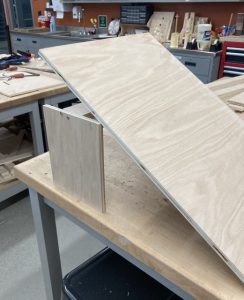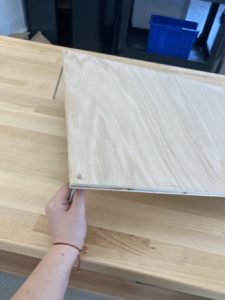This week, I focused on getting the IMU working to process inputs and outputs. While I didn’t make much progress on the IMU itself, I contributed significantly to motor testing. I realized that we needed a lower RPM for higher torque, which led to switching to motors with a lower RPM. Initially, I attempted to decrease the RPM using a resistor, but this prevented the motor from functioning properly. Later, I tried using a capacitor to supply additional current and power, but during testing, I accidentally sent a wheel flying across the lab. I’m sorry. Through these experiments, we discovered that connecting multiple motors leads to a voltage drop, which I plan to fix by adding capacitors in parallel.

IMG. 1 – OLD RAMP

IMG. 2 – NEW RAMP
In addition to motor testing, I worked on the linear actuators (LA), testing them with an Arduino as we encountered issues with the code used to control them. Another key task I undertook was building a ramp for testing. Initially, I designed a standard adjustable ramp similar to a folding chair mechanism. This took about three hours to construct, during which I used M5 rods to lower the height and adjust the angle. After consulting an expert, I revised the design and switched to using two M5 threaded rods for better adjustability.
I am behind on this project with little time left, so I plan to dedicate significant time to working on the circuit, catching up, and putting in extra hours.
My main goal is to get the robot running and begin testing as soon as possible. I also hope to finish the ramp to test inclined angles and assess balance with water on top.
